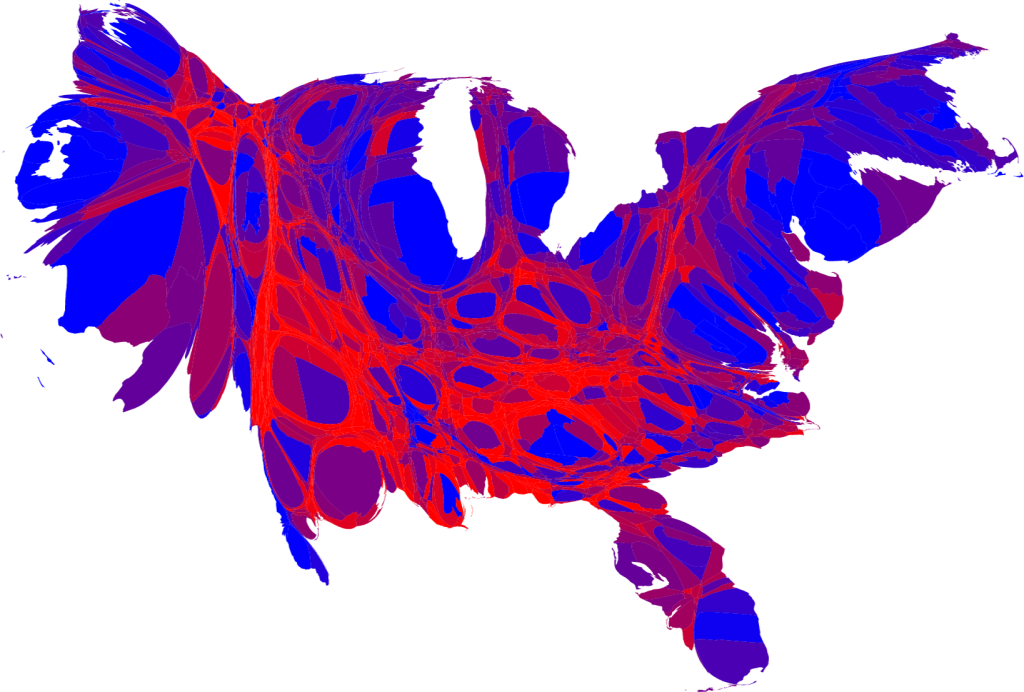But is it really a North-South divide? One could forgive a naive but observant foreigner for looking at this population-weighted map of the 2008 election and thinking it's really the coasts vs. the interior, with an island in the north just west of the Great Lakes (the Madison-Minneapolis axis):

Now that not just financial but human capital is highly mobile, the increasing division is between the educated social liberals on the coast and the trade workers in the interior. The exchange has slowed down over the past five years; we've gotten to where we're going. Note also that if you live on the coast and you just can't believe the dismal economic prospects you keep hearing plumbers and factory workers talking about in the interior...it's because you live on the coast. The structural unemployment of semi-skilled and unskilled labor that was masked for a decade by the housing boom is now back in full force, and it's not going anywhere.
The final irony is that the liberals on the coasts (who, by this categorization, I am one of) have created policies which make housing scarce, attract high-earning professionals who further drive up prices, and accelerate this polarization. Everywhere near saltwater is becoming San Francisco and New York in terms of their housing markets. California is a perfect example, and is no longer the most non-Malthusian territory on the planet; the easy living in Beach Boys songs doesn't resemble the state that I see today. Just ask a middle class family that's moved out of California and headed for the interior. Emigration was greater than immigration from 2000-2009, and for the first time since the Gold Rush, there are more native-born Californians here than immigrants like myself. I am a high-earning professional* from the other coast. Coincidence? That pattern you see from the 2008 election is going to repeat itself for several decades at least. *I was, and will be again once I finish this damn MD.
No comments:
Post a Comment